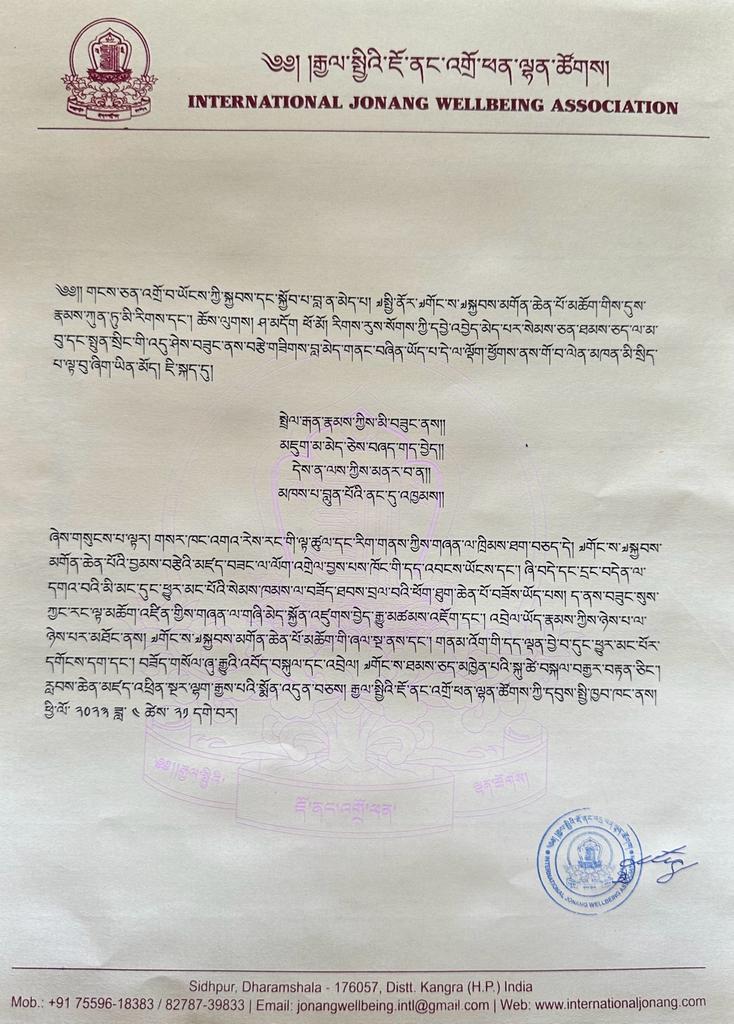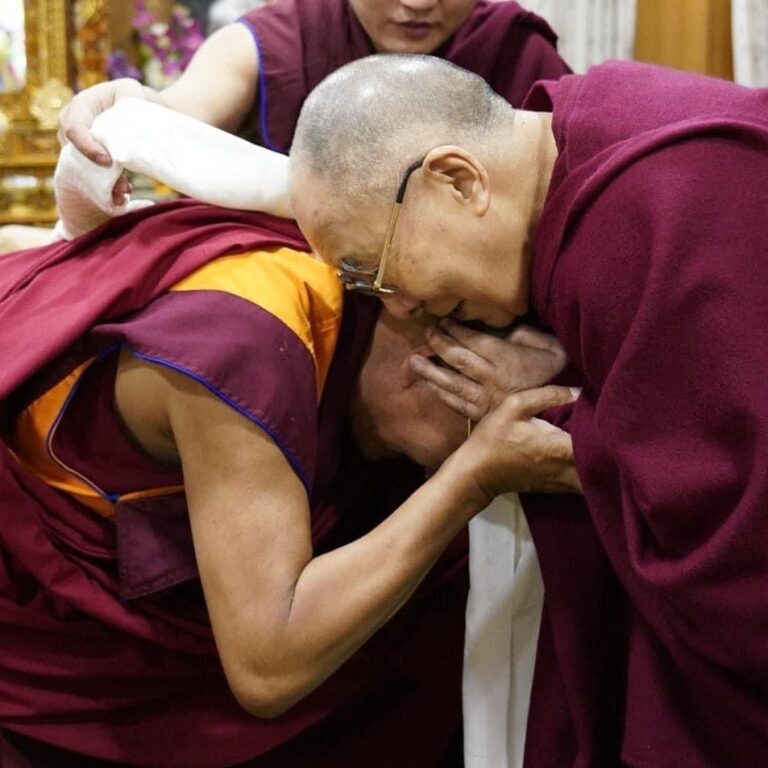A Work Telling the Life and Liberation Story of the Great Master Padmākara.
Part 10 Thereafter, the Master went to the Palace Drakmarat the Tamarisk Grove. An envoy carried a message saying that in order to meet the king, the Master would need to first bow in front of him. The Master responded, saying, “The king could not withstand my homage,” and when he bowed towards a large boulder, it shattered to pieces. When he bowed towards some clothes that the king had taken off, they immediately caught fire. Seeing all this, the king then prostrated at the Master’s feet. Earlier, a temple had been built by Sangshiat Drakmar Drenzang, modelled on a Chinese temple at Wutai Shan. The temple had not been inaugurated, however, and the great Master was asked to visit. Although he took up the invitation, the king and the great ministers did not come for the blessing and consecration rituals. All the court officials and household staff did come to watch, though. The Master led all the great images of the deities, as if they were human, to the banquet place. That watching could not believe what they were seeing, and at midnight, carrying butter lamps, they went back to examine the temple. Inside there was not a single clay statue—the temple was completely empty! Even when they used a staff to examine the places where the statues had been placed, there was not a thing solid to touch. Only then they did, they believe. In the morning, they peeped through a hole in the temple door and saw that all the statues were now arranged exactly as before. Master Padma was making offerings, the deities were eating the food, and they were all having a conversation. During the whole of that day, the incense and butter lamps all lit themselves, the instruments played themselves, the bells sounded by themselves, the five ornamental banners multiplied to five hundred, and, although there was only one cupped handful of grapes on a plate, the number of grapes never diminished, no matter how many were eaten by the people assembled there. Everyone was

